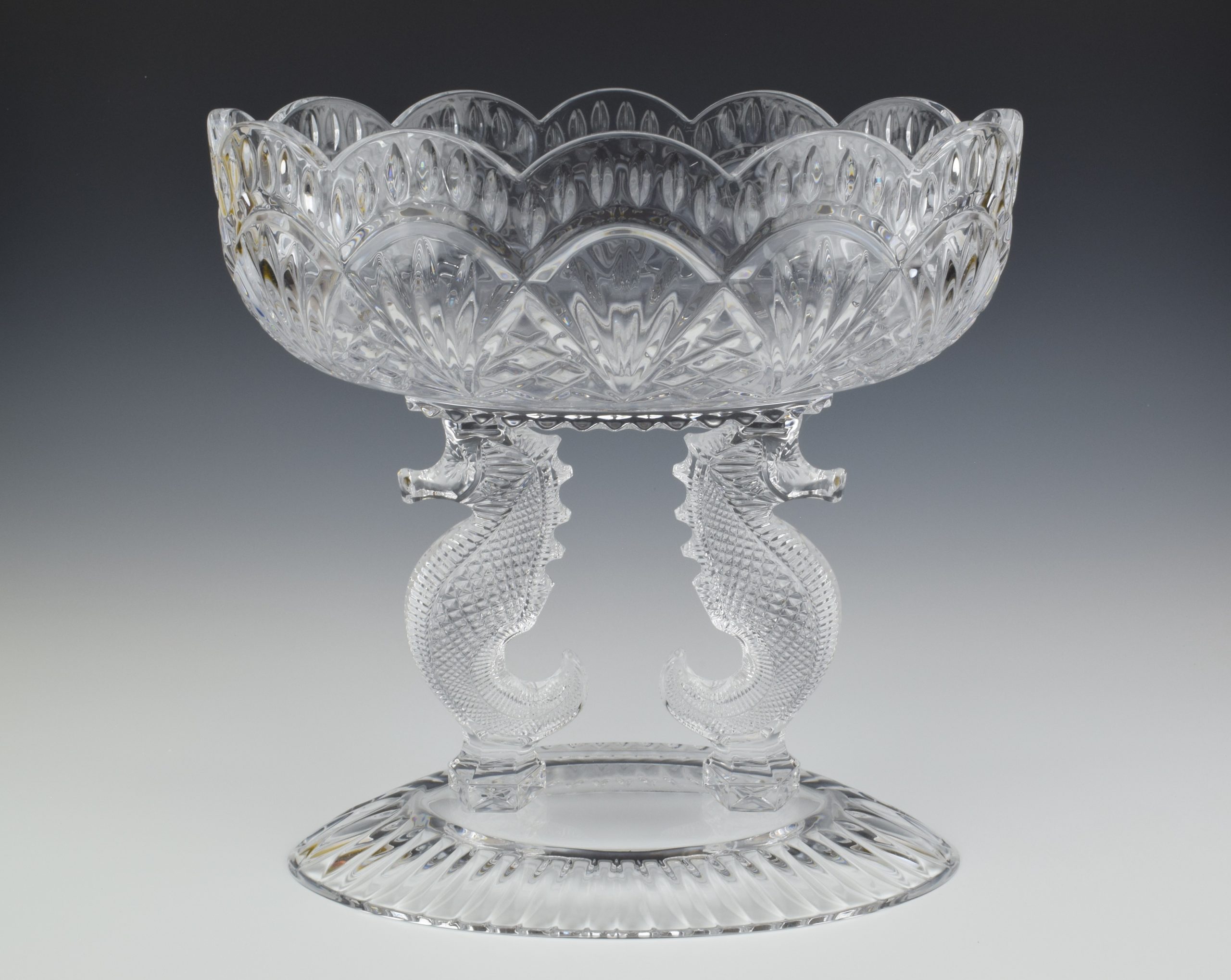Waterford Crystal is one of the most recognizable and admired names in the world of luxury crystal. For over two centuries, Waterford Crystal has been producing exquisite glassware that combines beauty, quality, and functionality. But how did this iconic brand come to be? What are the secrets behind its success and longevity? In this blog post, we will explore the history of Waterford Crystal, from its humble beginnings in 18th century Ireland to its modern-day global presence.
The Origins of Waterford Crystal
The story of Waterford Crystal begins in 1783, when two brothers, George and William Penrose, established a glassmaking factory in Waterford, a port city in the southeast of Ireland. The Penrose brothers had a vision to “create the finest quality crystal for drinking vessels and objects of beauty for the home” 1. They hired skilled craftsmen from England and Europe, and invested in the latest technology and equipment. Their glass was made from flint, a type of quartz that gave it a high refractive index and a brilliant sparkle. The glass was also cut with intricate patterns that enhanced its clarity and elegance.
The Penrose brothers’ glass soon gained a reputation for its excellence and innovation. They exported their products to Europe, America, and India, and received commissions from royalty and nobility. Some of their notable customers included King George III, Empress Catherine II of Russia, and the Duke of Wellington. The Penrose brothers also contributed to the social and economic development of Waterford, providing employment and education for the local community.
However, the Penrose brothers’ success was not without challenges. They faced competition from other glassmakers, high taxes and tariffs, and political unrest. In 1799, George Penrose died, leaving his nephew John Hill as his successor. Hill continued the business until 1825, when he sold it to Jonathan Gatchell, a former employee. Gatchell ran the factory until 1851, when he was forced to close it due to financial difficulties and changing consumer tastes. The Waterford Glassworks ceased production, and the name of Waterford Crystal faded into obscurity.
The Revival of Waterford Crystal
The Waterford Crystal story resumes in 1947, when a Czech glassmaker named Karel (Charles) Bacik decided to revive the tradition of crystal making in Ireland. Bacik had fled his homeland after the Nazi invasion, and settled in Dublin, where he met a jeweler named Bernard J. Fitzpatrick. Fitzpatrick had a keen interest in Irish glass, and had acquired some pieces of the original Waterford Crystal. He persuaded Bacik to join him in his venture to establish a new glassmaking factory in Waterford.
Bacik hired another Czech glassmaker, Miroslav Havel, as his chief designer. Havel studied the surviving examples of the old Waterford Crystal at the National Museum of Ireland, and used them as inspiration for his new designs. He also introduced new techniques and styles, such as the wedge and diamond cuts, and the Lismore pattern, which became the signature of Waterford Crystal. Havel’s designs combined the best of the old and the new, creating a distinctive and timeless aesthetic.
The new Waterford Crystal factory opened in 1951, and soon attracted attention and acclaim. The company exhibited its products at international fairs and exhibitions, and won several awards and honors. The company also expanded its product range, offering not only stemware and tableware, but also chandeliers, trophies, sculptures, and jewelry. Some of its notable commissions included the Times Square Ball, the People’s Choice Awards, the Ryder Cup, and the Kennedy Center Honors. The company also collaborated with celebrities and designers, such as John Rocha, Jasper Conran, and Jo Sampson, to create exclusive collections.
The new Waterford Crystal also faced its share of difficulties, such as labor disputes, market fluctuations, and financial crises. In 2009, the company went into receivership, and its main factory was closed. However, the company was acquired by the Fiskars Corporation, a Finnish consumer goods company, in 2015. The company also relocated its manufacturing and visitor center to a new location in the heart of Waterford city, where it continues to produce and showcase its crystal. The company also maintains its global presence, with stores and distributors in over 80 countries.
The Legacy of Waterford Crystal
Waterford Crystal is more than just a brand of glassware. It is a symbol of Irish culture, heritage, and craftsmanship. It is a testament to the vision, passion, and skill of its founders and makers. It is a source of pride, joy, and inspiration for its customers and admirers. It is a legacy of excellence that spans generations and continents.
Waterford Crystal is not only a part of history, but also a part of the present and the future. It continues to innovate and create, to celebrate and commemorate, to beautify and enrich. It continues to uphold its values of quality, design, and functionality. It continues to shine and sparkle, like the crystal itself.
I hope you enjoyed this blog post about the history of Waterford Crystal. If you want to learn more about this amazing brand, you can visit their official website 2, or their visitor center in Waterford, where you can see the world’s largest collection of Waterford Crystal, and watch the master craftsmen at work. You can also browse and shop their products online 3, or at your nearest retailer. Whether you are looking for a gift, a souvenir, or a treat for yourself, you will surely find something that suits your taste and budget. Waterford Crystal is not just glass, it is a treasure.
